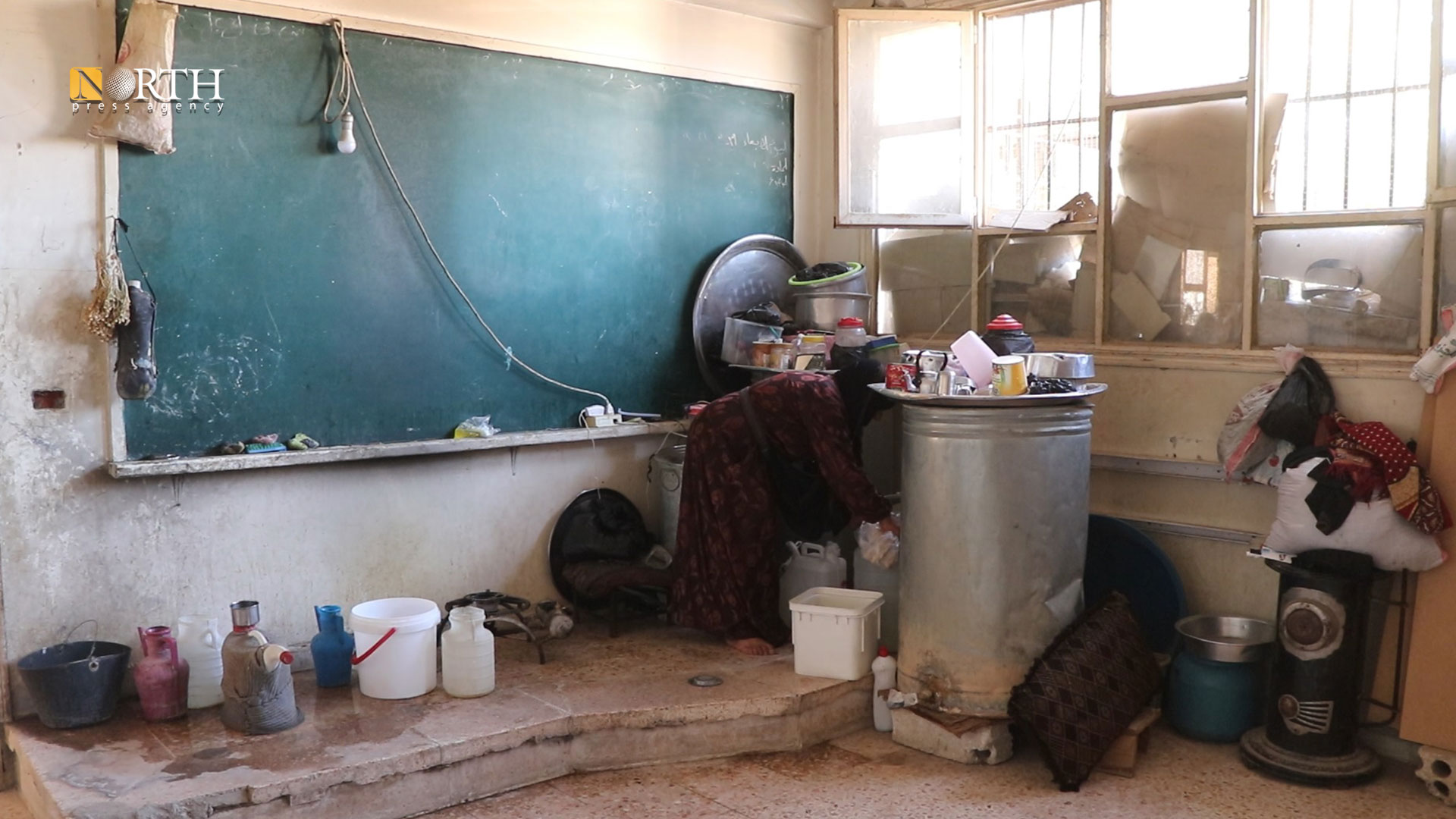By Samer Yassin
HASAKAH, Syria (North Press) – As the decision to relocate internally displaced persons (IDPs) from schools-turned-shelters in Hasakah Governorate, Northeast Syria, is set to be implemented, growing concerns are emerging among the displaced communities.
The IDPs, already grappling with uncertainty, fear losing their only refuge without guarantees of alternative housing.
Escalating fears
Many of these IDPs originally fled from the city of Sere Kaniye (Ras al-Ain) in the northwestern countryside of Hasakah following the Turkish invasion in 2019. While some sought refuge in displacement camps in rural Hasakah, others found temporary shelter in schools repurposed by the Autonomous Administration of North and East Syria (AANES).

To address the needs of displaced families, the administration of the Sere Kaniye camp in Hasakah countryside announced plans to open a new sector in the camp to accommodate IDPs being relocated from the schools.
This move comes in response to demands from local villagers who wish to reclaim their schools for educational purposes.
Hamid Darwish, a 60-year-old displaced from Rashidiya village in the northern countryside of Hasakah, has been living with his family in a school for years. He expressed his frustration to North Press, explaining, “We are not against education, we want it for everyone.”
“But we are forced to stay here because we have no other choice,” he said, adding that if provided with a safe alternative, he and his family would vacate the school immediately, despite the lack of consistent humanitarian support.
IDPs in Limbo
Approximately 7,300 IDPs are currently spread across 38 schools in Hasakah and its countryside, according to a local school monitoring committee official. In the town of Tel Tamr alone, IDPs occupy 18 schools.
Fatima Atiya, displaced from al-Daradara village, has lived in one of these schools for five years. While the school is far from ideal, she and others feel trapped due to ongoing shelling in their villages.
“We don’t want to stay in schools, but safety is our priority,” Atiya emphasized. She described the living conditions as dire, with insufficient services and assistance.
Iman Ahmad, another IDP from the village of al-Manajir near Sere Kaniye, highlighted the tension between IDPs and local residents. The residents have repeatedly called for the school to be vacated so students can return.
The situation has led to disputes, with verbal altercations between the displaced families and the locals. Ahmad urged the AANES to provide the IDPs with safe shelter in camps, lamenting the ongoing pressure they face to leave the schools.
“We need a permanent solution,” she said. “If we could, we would join forces with the local residents and demand safe shelters together. The schools should be for students, but we need somewhere to go.”
Challenges of relocation
Muhammad Saeed Sheikhmous, co-chair of Tel Tamr town council, affiliated with AANES, outlined the plan for relocation saying that the process will occur in two phases: families who can be sheltered in camps or safe villages will be relocated first, while others will be consolidated into fewer schools to free up the remaining ones for educational use.
He acknowledged the challenges ahead, noting that 100 families are currently living in 20 schools in Tel Tamr and the surrounding villages.
“We aim to gather the families most in need into about three schools,” Shikhmos explained, “which would allow us to free up around 15 schools for students to return and resume their education.”
Addressing complaints from IDPs, Sheikhmous reassured them that no family would be forced to leave the schools without legal procedures being followed.

